



Summary
Malaysia targets higher revenue from export commodities

The Plantation Industries and Commodities Ministry is aiming to grow Malaysia’s exports of commodities by 5-8% this year through the implementation of strategic measures.
“This will be done by expanding our market share while penetrating new markets, including [negotiating] a free trade agreement with Iran and exploration of new markets in south Asia and southern Europe,” said the Minister, Datuk Seri Mah Siew Keong.
These initiatives are expected to maintain the momentum of the country’s commodities segment, which consists of palm oil, rubber, wood, cocoa, pepper and kenaf products.
“[From] January to October 2016, [exports of] commodities grew 2% to RM99.2 billion from the year before. The commodities sector also accounted for 15.6% of national exports,” the Minister said.
The Ministry will continue to invest in research and development in order to develop higher value-added downstream products, as well as to improve current export products.
“The R&D work will increase the marketability and competitiveness of our exports in the global arena,” Datuk Seri Mah said.
Source: Malaysia Reserve, Jan 6, 2017
Change at the helm of Malaysia’s FELDA
Tan Sri Shahrir Abdul Samad has been named the new Chairman of the Federal Land Development Authority (FELDA) in line with the Malaysian government’s aspiration to strengthen the agency’s leadership.
He has wide experience in government administration, having previously held three Cabinet portfolios at different times. He was once the Chairman of the Malaysian Palm Oil Board and of the parliamentary Public Accounts Committee.
Tan Sri Shahrir replaces Tan Sri Mohd Isa Abdul Samad whose term ended, although he remains Chairman of Felda Global Ventures Holdings Bhd. During his tenure, FELDA had implemented many community activities and programmes to enhance the quality of life of settlers and their families.
In a statement, Prime Minister Datuk Seri Najib Abdul Razak said that with the restructuring, there is a division of responsibilities in regard to the settlers’ welfare and socio-economic status, and FELDA’s business activities.
Source: Bernama, Jan 7, 2017
Malaysia, Indonesia to discuss common CPO tax structure

Malaysia is open to negotiations with Indonesia over the possibility of harmonising the CPO export duty structure of both countries.
Malaysian Plantation Industries and Commodities Minister Datuk Seri Mah Siew Keong said a meeting will be held in the coming months.
“When I say harmonise the CPO tax structure, it doesn’t mean Malaysia will compromise to our disadvantage. We want to discuss […] the possibility of a common tax structure which does not conflict the trading of our palm oil in the world market,” he explained.
Currently, the wide gap in Indonesia’s export duty differential between CPO and refined palm oil encourages more production of refined palm oil; this has resulted in increased competition with Malaysia, particularly in the downstream sector.
“When you add a new system, there will be some losses and benefits to the respective players, but we will try to combine it to strike a balance for our overall exports,” the Minister said.
On export performance, he noted that the Malaysian palm oil market share in China had fallen to 45.7% in 2015 from 52% in 2014, while Indonesia’s market share rose to 53.9% from 47% over the same period. However, efforts are being made to woo back buyers.
Datuk Seri Mah also stressed the significance of diversification to new products and securing new markets.
“We want to go to the Middle East, as well as ASEAN countries such as the Philippines and Vietnam. I am going to Iran [this month] to negotiate higher imports for our palm oil. These are the new markets,” he added.
Source: The Star, Jan 16, 2017
RM30mil fund set up to mechanise oil palm fruit harvesting in Malaysia
Malaysia is establishing a RM30 million fund to improve the mechanisation of oil palm fruit harvesting,
Plantation Industries and Commodities Minister Datuk Seri Mah Siew Keong said: “We have to be more committed in finding more efficient ways to harvest oil palm fruit. We cannot go on being so reliant on manual labour.”
Some 70% of Malaysia’s oil palm estate workers are foreigners.
“This year, we are celebrating 100 years of commercial oil palm planting, but we have yet to improve on mechanisation of fruit harvesting. Of the RM30 million mechanisation fund, RM5 million will be privately-funded,” the Minister said.
It has been reported that Malaysia’s oil palm industry is facing a shortage of workers, resulting in many planters not being able to fully harvest the fruit.
Source: New Straits Times, Jan 17, 2017
Malaysian CPO output has doubled every 10 years over centennial
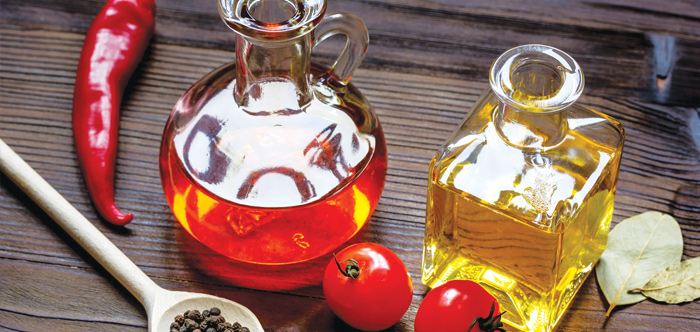
Malaysia, one of the world’s largest producers of CPO, enters the milestone centennial celebration of the sector in 2017 amidst tremendous growth.
Output has doubled every 10 years and the country’s track-record of providing quality vegetable oil to consumers worldwide, at reasonable prices, has helped alleviate poverty in many Third World countries.
Dorab Mistry, a leading industry analyst at Godrej International Ltd, endorses the country’s palm oil as its “Jewel in the Crown”. He said Malaysia has done wonders in terms of boosting export revenue.
“For 90 years, you [Malaysia] have been on your own. You are the Number One producer as you are doing all the propagation. You are being challenged by Indonesia on all fronts,” he said.
“So, while Malaysia celebrates 100 years, it has to re-dedicate itself to really take its competitor head on. At the same time, Malaysia must ensure that the markets it has, and the new markets that [it is] developing, go according to plan.”
Although Malaysia’s palm oil industry is expanding rapidly, labour shortage has been an issue – and it is becoming more difficult to source additional workers.
“Malaysia has got to do something about its labour regulations because the labour shortage is really strangling your plantations. It has been the biggest challenge facing the country’s CPO sector,” he said.
“However, against this backdrop, congratulations to Malaysia. I think if there is an example of a country which has nursed and nurtured an industry into great prosperity, I would hold Malaysia as a fine example.”
James Fry, Chairman of commodities consultancy LMC International, agreed that the Malaysian government needs to address the labour shortage issue, following its policy to reduce the number of foreign workers by 110,000.
“It is all right if you tell the industry how they will manage with fewer workers, but you have seen the impact, you have longer harvesting periods, lower quality and it hits your yield,” he said.
ISTA Mielke GmbH Executive Director Thomas Mielke said Malaysia has been the forerunner in palm oil and food research. He said palm oil has made major inroads not only into Asia, but also the African continent and central and South America.
“There has been tremendous increase in palm oil imports and consumption in Europe, as well as in the Commonwealth of Independent States countries,” he noted.
Source: Bernama, Nov 20, 2016
More palm oil for Indonesia’s biodiesel sector by 2020
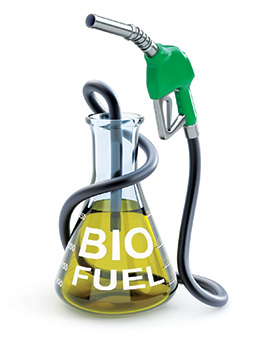
Indonesian demand for CPO for biodiesel use will grow nearly 70% by 2020 as the price gap with conventional diesel narrows and more subsidies for blending become available.
Indonesia, the world’s top producer of palm oil, is pushing to increase usage of biodiesel to cut its oil import bill and curb greenhouse gas emissions. Its so-called B20 programme required a minimum 20% blend of bio-content in diesel fuel in 2016, up from 15% in 2015.
The biodiesel sector’s appetite for palm oil will increase to 10.6 million tonnes by the start of the next decade, from 6.3 million tonnes forecast for 2016, said Bayu Krisnamurthi, Chief Executive of the Indonesia Estate Crop Fund.
“Looking forward, we’ve calculated that by 2020, 26% of palm oil will go to biodiesel, so biodiesel becomes the new demand for the palm oil industry,” he said at a conference on Nov 23, 2016.
The fund is a government agency in charge of collecting palm oil levies to finance biodiesel subsidies in the country.
“The gap is getting thinner,” he said, referring to the spread between prices for biodiesel and conventional diesel coming down by around 30% in 2016 as oil prices strengthened.
The palm oil industry hopes the drive towards biodiesel will provide underlying support for prices of the edible oil.
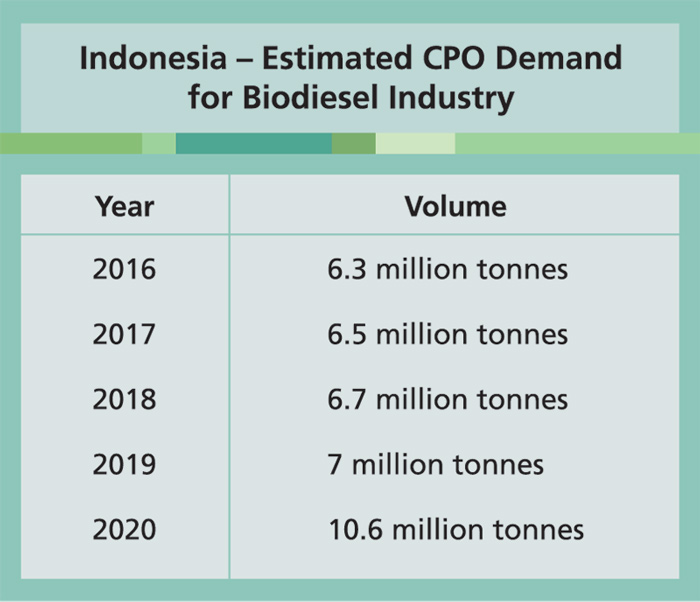
Source: Indonesia Estate Crop Fund
The country is also targeting a 90% increase in unblended biodiesel consumption in 2017 to 5.5 million kilolitres, from an estimated 2.9 million kilolitres in 2016.
The 2017 target is “with the assumption that there is an expansion of subsidies”, said Dadan Kusdiana, Secretary of the Renewable Energy Directorate.
Indonesia started collecting a levy on its palm oil exports in July 2015 – US$50 per tonne for CPO and US$30 for processed palm oil products – and uses part of this to help fund biodiesel subsidies.
Levies collected by the Indonesia Estate Crop Fund would also need to be increased to pay for additional biodiesel subsidies, Kusdiana said, adding that his office had proposed an incremental increase. The fund is targeting a 14% increase in levies collected in 2017.
Source: Reuters, Nov 25, 2016
Phase 1 of new smallholder traceability system in place

GeoTraceability, Wilmar International Ltd and Wild Asia have announced that the first phase in the development of a new smallholder traceability system has been successfully completed.
The system enables mills to map their smallholder supply base and trace smallholder fresh fruit bunch (FFB) deliveries from the mills back to their farms. A key innovation in this project is the ability to provide smallholders with agronomic recommendations from mills and supporting organisations for increasing productivity, as part of their participation in the traceability system.
This project, supported by the Sustainable Trade Initiative (IDH), is currently underway in Wilmar’s Sapi Plantation in Sabah, Malaysia. The ability to trace smallholder FFB supply is critical to Wilmar in ensuring compliance by its third-party mill suppliers and independent smallholder suppliers, under its ‘No Deforestation, No Peat and No Exploitation’ policy.
Since July 2016, more than 90% of the smallholder supply base of the mill has been surveyed and mapped, with 1,400 traceable deliveries of smallholder FFB recorded. The next steps in the project are to roll out the system to an additional Wilmar-owned mill, as well as a third-party supplier mill, both in Sabah.
Jeremy Goon, Wilmar’s Chief Sustainability Officer, said: “Smallholders are a key stakeholder group in our pursuit of a sustainable and transparent supply chain. We have committed substantial resources to empowering smallholders to improve their livelihoods and to ensure they share in the benefits of oil palm development.
“Our collaboration with GeoTraceability and Wild Asia to develop this smallholder-specific traceability tool is a win-win for the industry and smallholders. Benefiting from agronomic expertise is an important incentive that will further strengthen sustainability take-up among smallholder producers. We hope this tool can help facilitate the traceability agenda of our external mill suppliers and the wider industry.”
Dr Reza Azmi, Executive Director and Founder at Wild Asia said: “Our Wild Asia Group Scheme is a programme to promote traceability and better production among groups of small independent oil palm producers.
“Systematic electronic data on the small producers means that we can accelerate our work, and that our agronomists can deliver individualised support to our group members. More importantly, we want to be able to empower local producers with tools that can provide meaningful insights to their own production data.”
Pierre Courtemanche, Chief Executive Officer at GeoTraceability, said: “Our software and training is designed to support mills, NGOs, development agencies and governments in better delivery of support to smallholders. This combination of tools supports a ‘New Deal’ for farmers: allow us to use your data to improve transparency and you’ll receive improved support services.”
GeoTraceability’s Digital Agronomist is a new software technology which allows the delivery of agronomists’ expertise to each individual smallholder farmer, and his or her fields.
The agronomic recommendations for increasing smallholder productivity are compiled in individual ‘Farm Business Plans’, which can be further supported with field-input credit, training and ultimately Roundtable for Sustainable Palm Oil group certification. This package of opportunities to improve productivity and profitability for smallholder farmers presents a compelling alternative path to the farm expansion model.
IDH has been working with industry actors to coordinate and accelerate progress on traceability since 2014 and is supporting platforms such as GeoTraceability as critical innovations on the path to sustainability. IDH is supporting the project financially and has informed project design with the objective of maximising lessons learnt, that may be of value to the wider industry.
Source: foodingredientsfirst.com, Nov 8, 2016
Global edible oils market valued at US$130bil in 2024

The global edible oils market is segmented into palm, soybean, sunflower, olive, corn and canola oils, as well as specialty blended oils and others. The palm oil segment is projected to register the fastest growth rate through the forecast period, with the segment accounting for over 32% share in the global market in terms of volume in 2015.
Soybean oil is projected to register a slight negative growth owing to the surplus availability of raw materials and shifting consumer preferences towards healthier edible oil options such as olive and canola oils. This shifting market trend is a result of increasing disposable income levels in households worldwide and growing awareness with regard to healthy eating.
According to a new report published by Persistence Market Research, ‘Global Market Study on Edible Oils: Industry Analysis and Forecast 2016-2024’, the global edible oils market is expected to register a CAGR of 5.1% through the forecast period to reach the value of US$130.3 billion at the end of 2024. The projected market trend can be attributed to rising health concerns across the globe and growing demand for healthy edible oils, such as canola and olive oils.
Manufacturers are adopting new techniques – such as cold pressing – to increase production of edible oils. This, combined with growing disposable incomes and the growing demand for snacks and fried food globally, are major drivers in the global market. The rising retail sector is a major boon, as the wide network organised market has helped bolster growth of edible oils.
In terms of end-users, the global market is segmented into the food service, food processor, and retail sectors. Established chains and a strong supply chain of edible oil products are expected to drive the retail segment, which is expected to register a CAGR of 5.3% through the forecast period. The food service segment is projected to register a CAGR of 5.1%, due to the lower prices and easy availability of palm oil.
The global edible oils market is segmented on the basis of region, into North America, Europe, Asia Pacific, Latin America, and Middle East and Africa (MEA).
Asia Pacific is projected to dominate the global market, accounting for 41.2% share in 2015, and is expected to account for 42.4% at the end of 2024. The projected market trend can be ascribed to growing demand for edible oils in India and China, especially in the food and beverage industries.
Europe and MEA are anticipated to register negative growth in terms of market share, owing to shifting consumer preferences towards high-quality edible oils in the regions.
Source: http://satprnews.com, Dec 7, 2016
Brazil’s grain export lull sets stage for record shipments
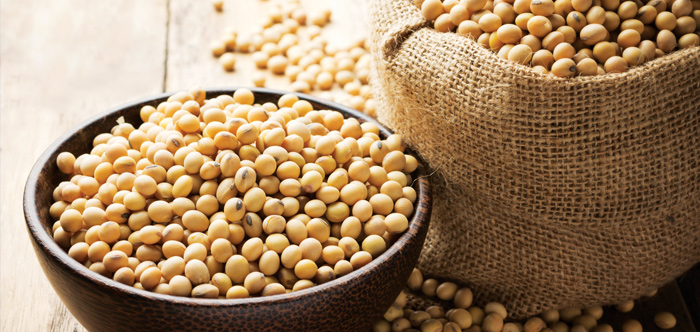
If there is a silver lining to Brazil’s recent shortcomings in grain exports, the country is now more prepared than ever to pump out big volumes in 2017, perhaps to the dismay of its competitors.
Brazil is the No. 1 and 2 shipper of soybean and corn respectively, but early in 2016, the drought-stricken country found itself with much less exportable supply than expected at the wrap-up of harvest.
Brazil should be at the height of the corn shipping season from October through December, but saying that corn exports have been dismal over the last two months might be far too generous.
Shipments of corn and its by-product, ethanol, were down by nearly 80% in October and November 2016 versus a year earlier. Soybean fared slightly better with exports down two-thirds over the same timeframe, although exports of the oilseed do not usually get going until February or March.
But with the drought of 2016 mostly in the rear-view mirror, record corn and soybean crops are a real possibility heading into 2017, particularly if favourable weather holds. And although Brazil has notoriously faced transportation and logistical issues at ports in the past, that is much less the case today.
The upcoming 2016/17 export season could be one of the smoothest Brazil has seen in recent years. And if domestic soybean and corn prices are internationally competitive once the products arrive to market, the US, one of the country’s main trade rivals, will start feeling the pressure.
In 2015/16, the Brazilian soybean and corn harvests were originally projected to top 100 million and 80 million tonnes respectively, but late-season drought cut the volumes to 95.4 million and 66.6 million tonnes. The second crop corn, also called safrinha, was hit especially hard.
But the 2016/17 season is already showing promise as both soybean planting and development is ahead of normal, and 94% of the first corn crop is in good condition. Analysts polled by Reuters expect both crops to set new records this year – 102.64 million tonnes for soybean and 86.58 million tonnes for corn.
Good weather and an early harvest would place the oilseed a little sooner than usual in the market place, potentially cutting into the US business. It would also mean an earlier start to the sowing period for safrinha, which accounts for roughly two-thirds of Brazil’s total corn output.
Corn does not typically start being shipped out en masse until August, as the safrinha crop is more heavily exported than the full-season corn, which is mostly dedicated to domestic use, since the ports are full of soybean when it is harvested.
Brazil is expected to ship a record volume of soybean in its 2016/17 marketing year, which begins in February 2017 and runs through January 2018. Current industry estimates range from 57.5-60 million tonnes, well above figures for the 2015/16 year which stand at or just above 50 million tonnes.
Relatively speaking, the drought has impacted corn exports much more than soybean, as shipments in the current marketing year will fall up to 50% from the record 2014/15 campaign. Industry estimates for Brazilian corn exports range from 16-19 million tonnes for the 2015/16 season, which will conclude at the end of February 2017.
Analysts peg Brazil corn exports to be the second-largest volume on record in the 2016/17 marketing year, beginning in March 2017. Shipments are likely to range between 25 million and 30 million tonnes. If the weather remains supportive and export prices are attractive to buyers, trade competitors have good reason to start getting nervous.
Source: Reuters, Dec 8, 2016
Sabah to gazette forest as orang utan protected area
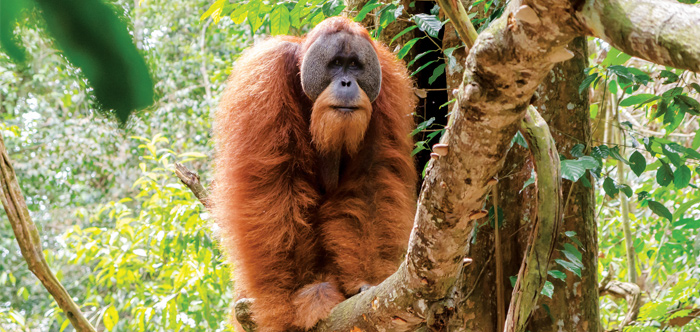
The Sabah Forestry Department is to gazette a forest rich in orang utan, as a fully protected area.
This comes with a sudden change in the ownership of the 101,000ha Forest Management Unit 5 (FMU 5), which also contains 13,000ha of flora and fauna.
State Forests Chief Conservator Datuk Sam Mannan said the area in central Sabah is being classified as a first-class reserve and will become part of the Trusmadi Forest Reserve.
FMU 5, owned by logging and reforestation company Anika Desiran, was purchased by wood products maker Priceworth International for RM260 million in October 2016.
Anika Desiran had been working with conservationists, including WWF Malaysia, over the past three years to create a model example of a conservation economy. The sudden sale of the property took the conservationists by surprise.
Mannan said the forest region had been logged a few times since the 1980s and that the Forestry Department had allowed it to be parceled out under the FMU programme in 1997 because it did not expect orang utan to inhabit such highland areas.
He said a WWF study had since found orang utan in FMU 5, so the high-conservation area within it will now be turned into a first-class reserve.
Once done, the new owner will have to provide a development master plan which must be approved before any kind of work can take place on the land.
Source: The Star, Jan 5, 2017